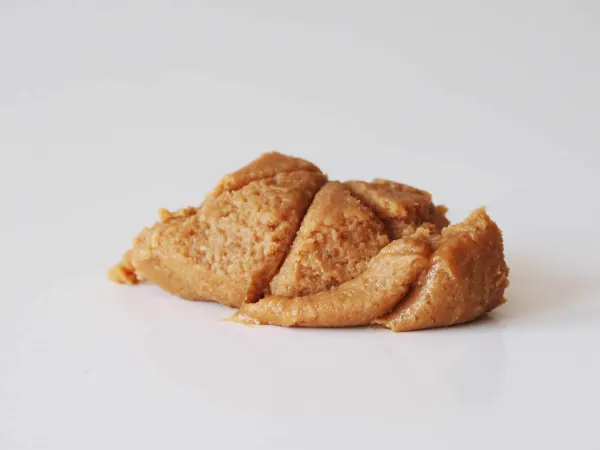Miso
Legume
Age Suggestion
12 months
Iron-Rich
No
Common Allergen
Yes

When can babies eat miso?
It’s best to wait until after your baby’s first birthday to serve food with miso and even then, to limit consumption. This is because miso is extremely high in sodium, which in excess can lead to hypernatremia, a condition of having too much salt in the blood, which affects body-water balance. Symptoms of hypernatremia may exacerbate into increased heart rate, muscle spasms, and possibly more severe conditions such as coma, brain damage or even death. Early and excessive exposure to sodium is thought to play a role in hypertension, cardiovascular disease, and obesity.
Background and origins of miso
Miso is a deliciously salty paste that’s been used in Japanese cooking for centuries and increasingly shows up in all sorts of foods—from bread and baked goods, to soups and stews, to salads and pickles, even pizza! Miso is typically made of salt, soybeans, and kōji—the Japanese word for Aspergillus oryzae fungus which breaks down the beans into fats and sugars that give the paste a distinctive umami taste. The paste ranges in color from deep red to rusty orange to earthy brown to pale yellow depending on fermentation time and ingredients. Some miso contains grains like barley or rice, and there’s a growing trend of making miso with alternatives to soybeans, such as adzuki beans and chickpeas.
While your toddler’s miso consumption needs to be kept in check, fermented foods can be a terrific way to expand your child’s palette. Check out our serving suggestions.
Videos
Is miso healthy for babies?
It’s complicated. On one hand, miso offers lots of protein, plenty of nutrients like vitamins B and K, and a robust dose of probiotics—beneficial bacteria that foster a strong gut. On the other hand, miso is exceptionally high in sodium, which in excess, is unhealthy at best. If you want to offer your child food prepared with miso, take care to minimize the amount of sodium during other meals that week.
Is miso a common choking hazard for babies?
Miso is typically used as a flavor enhancer in dishes. It should not pose any choking risk when mixed into other foods, though the foods it is mixed with could certainly pose a risk.
For more information, visit our section on gagging and choking and familiarize yourself with common choking hazards.
Is miso a common allergen?
Yes. Miso is typically made of soybeans—one of the most common food allergens, especially in babies and young children. As you would when introducing any new food, start by offering a very small amount to your baby during the first couple servings and watch closely. If there are no signs of an allergic reaction, gradually increase the quantity over future servings. Note that reactions do not always occur on the first exposure.
How do you prepare miso for babies with baby-led weaning?
Every baby develops on their own timeline, and the suggestions on how to cut or prepare particular foods are generalizations for a broad audience.
6 to 12 months old:
Avoid due to sodium levels. A small taste of mommy’s miso soup or dad’s tofu is fine, but be forewarned: your babe may want more!
12 to 18 months old:
At this age you may small amounts of miso in your cooking. Explore Japanese recipes, try adding a little miso to pan fried tofu cubes, cooked eggplant, or even just a thin smear of miso butter on toast.
18 to 24 months old:
Miso soup time! If your toddler is struggling with self feeding soup, encourage your child to sip directly from the bowl. You may also thicken soups by adding some cooked rice or mashed tofu.
White miso is the mildest and versatile, while red miso is the saltiest. If you’re new to miso, start with white and explore how it enhances your food.
For more information on how to cut food for babies, visit our page on Food Sizes & Shapes.
Written and reviewed by these specialists
Expert Tips Delivered to Your Inbox
Sign up for weekly tips, recipes and more!
The content offered on SolidStarts.com is for informational purposes only. Solidstarts is not engaged in rendering professional advice, whether medical or otherwise, to individual users or their children or families. No content on this site, regardless of date, should ever be used as a substitute for direct medical advice from your doctor or your medical or health professional, nutritionist, or expert in pediatric feeding and eating. By accessing the content on SolidStarts.com, you acknowledge and agree that you are accepting the responsibility for your child’s health and well-being. In return for providing you with an array of content “baby-led weaning” information, you waive any claims that you or your child may have as a result of utilizing the content on SolidStarts.com.


